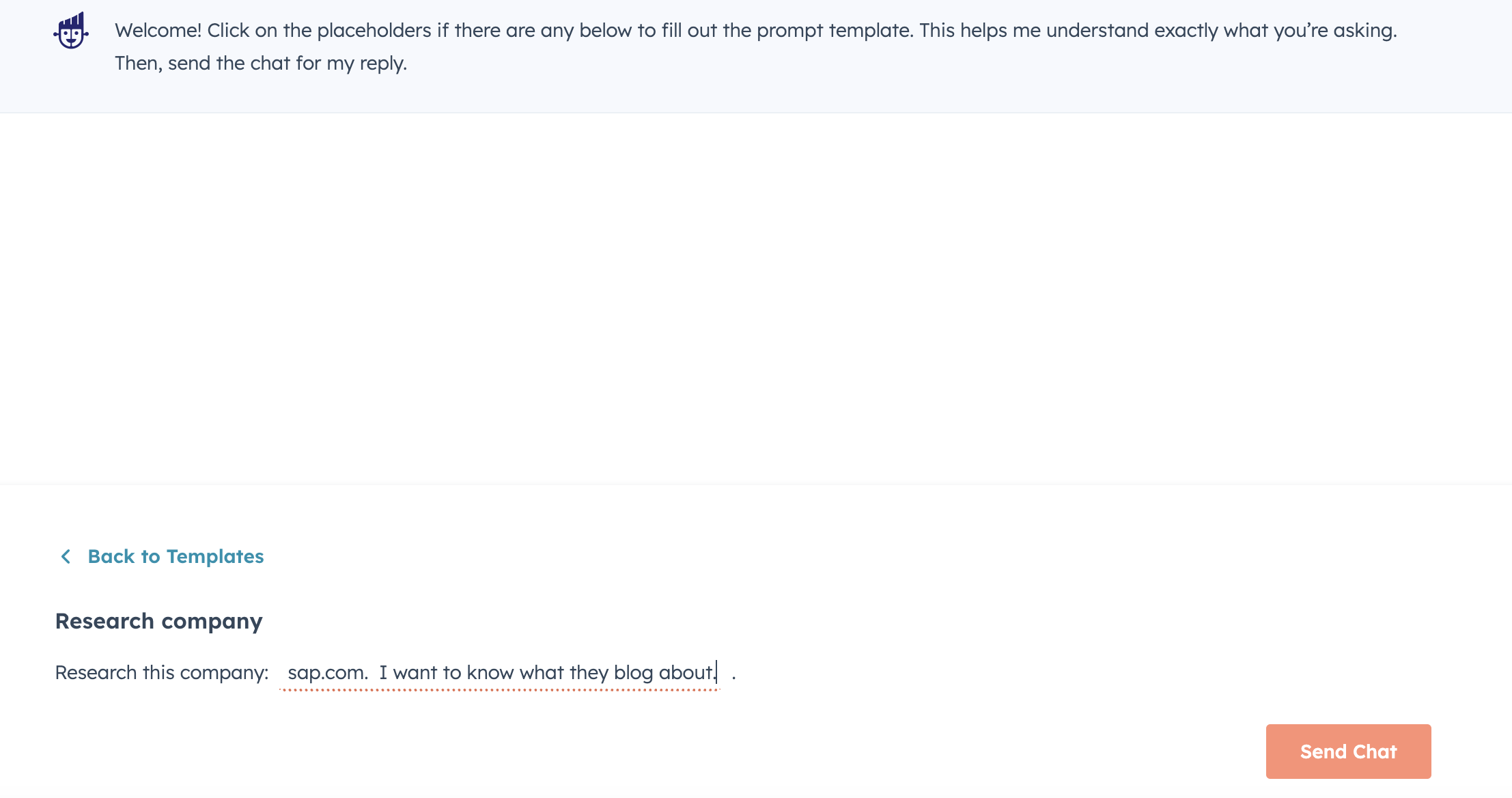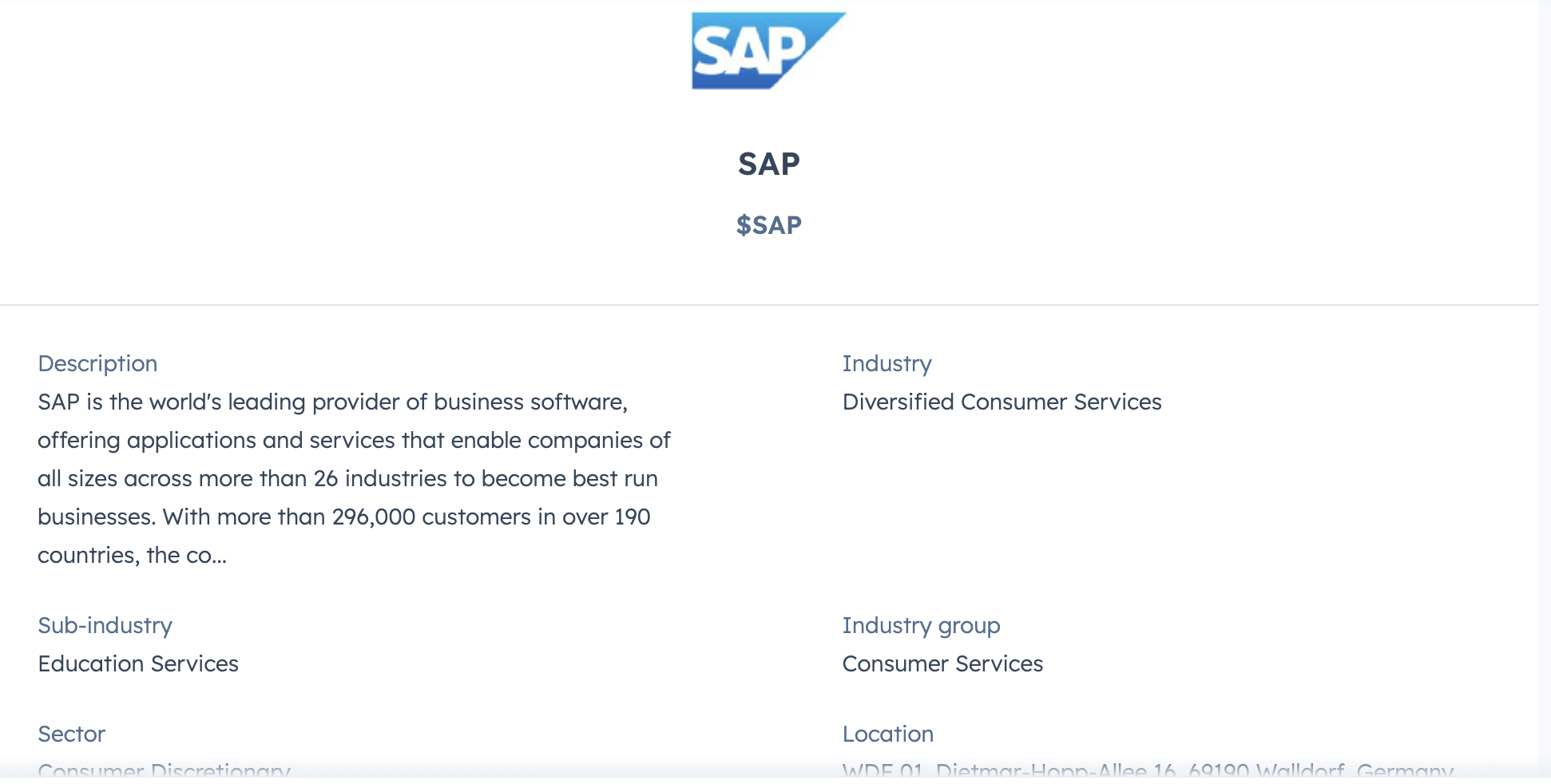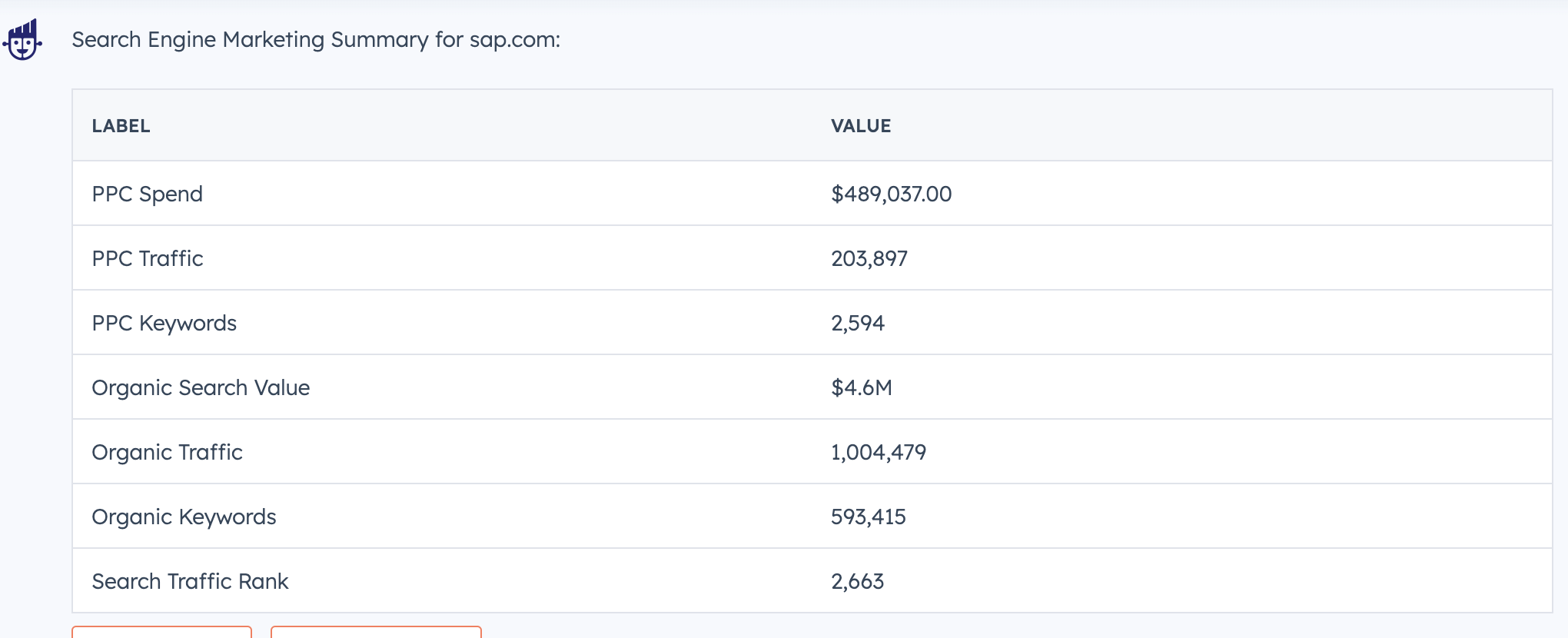Unleash the Power of AI: Writing Blogs Made Easy with HubSpot
Introduction
Hey there, fellow bloggers and content creators! Are you tired of staring at a blank screen, struggling to find the right words for your blog? Well, fret no more! Today, we're going to dive into the realm of artificial intelligence (AI) and explore how HubSpot's AI tool can revolutionize your blog writing game. So, grab your cup of coffee, and let's get started on this exciting journey of effortless content creation!
What is HubSpot's AI Tool?
Before we get into the nitty-gritty details, let's talk a bit about HubSpot's AI tool. Simply put, it's an innovative feature that uses AI to generate blog content based on your specific requirements. By analyzing millions of data points and utilizing natural language processing algorithms, this AI-powered tool can help you create engaging and relevant blog posts in a matter of minutes. It's like having a writing assistant on steroids!How Does It Work?

Now that we've piqued your interest, let's delve deeper into how this AI tool actually works.
Simple 2-Step Process
- First, you'll start by inputting a topic or a keyword around which you want your blog post to be centered.
- Then, sit back and let the AI work its magic. It will scour the internet, extracting information, analyzing the latest trends, and identifying key points to craft a well-structured and informative blog post.
But don't worry, this AI tool is not here to replace your creative genius. Instead, it acts as a resourceful assistant, providing you with a foundation to build upon. It suggests subheadings, extracts relevant statistics and quotes, and even generates the first few sentences to get you started. You can then add your personal touch, inject your personality, and mold the content to suit your unique style.
Benefits of Using HubSpot's AI Tool:
- Time-Saver Extraordinaire:
Let's face it, time is a precious commodity, and the pressure to consistently produce high-quality content can be overwhelming. HubSpot's AI tool is a game-changer in this regard. By reducing the time spent on research and structuring, it allows you to focus on what you do best - injecting creativity into your writing. - Boosting Productivity:
No more writer's block! This tool sparks ideas and suggestions, helping you overcome that dreaded blank page syndrome. It's like having a knowledgeable writing partner who always has your back, ensuring that your content creation process is smooth and efficient. - Enhanced SEO Optimization:
Search Engine Optimization (SEO) is a vital aspect of blogging. With HubSpot's AI tool, you can rest assured that your content will be tailored to meet SEO best practices. From suggested keyword placements to optimizing meta descriptions and headings, this tool ensures your blog post has a better chance of ranking higher in search engine results. - Access to Data-Driven Insights:
The AI tool helps you tap into valuable data-driven insights. It can analyze engagement levels, suggest improvements to enhance readability, and even provide statistics to back up your claims. These insights allow you to make data-backed decisions and create content that resonates with your target audience.
Using Google Docs to Collaborate
You can collaborate with your team members on your blog content using Google Docs. This is where the human element of using the Hubspot AI comes into play. During this phase of your blog creation workflow, you can ensure your word count is optimized for search engines, bullet points are use to make key points more readable, and even make a supporting video.
My Refined Blogging Process
Artificial Intelligence is currently evolving rapidly. Systems such as SurferSEO or ContentatScale, can do a decent job of writing long-form blog content. However, whichever system you use, you are going to have a follow a proven process to bringing them up to a professional standard.
Putting the Spit and Polish on It
Once your initial blog draft is done. it's time to take it to the next level with HubSpot's AI tool. With this powerful tool, you can make your blog even more impactful by leveraging its highly detailed SEO capabilities. Once you're happy with your blog post on Google Docs, you can seamlessly transfer it to your HubSpot Blog and let the AI perform its magic. The AI tool will analyze your content, identify relevant keywords, optimize meta descriptions, and headings to ensure your blog post is fully optimized for search engines. This means that your blog will have a better chance of ranking higher in search engine results, ultimately driving more organic traffic to your website. So, harness the power of AI and let HubSpot take your blog to new heights of success.
Check Out Your Competition With Hubspot's AI
Let's say you're going to write a "How To" Style post, which is a very popular blog post style. One of the first steps in your blog writing process should be to check out your competition. And wouldn't you know it, Hubspot's Chatspot (the Hubspot AI tool) also provides a competitor research functionality.

SAP Consulting
Since we are in the business of providing SAP Consulting, as well as Inbound Marketing and Sales, I decided to take a look at SAP.

Preliminary Research
It's always to good to actually read and understand what a company has to say about itself, and in this case, I am including only. a little bit of what is a very long page of information.
Search Term Information
While other tools are available to perform competitor analysis, such as SEMRush and AHrefs, this tool is built into the Hubspot platform and is pulling from a variety of sources. My recommendation is to use multiple sources of information during this competitor analysis phase. But here's what the Hubspot's AI Competitor Tool came up with regarding keyword information.

Tough Competitor - But Beatable:)
If you know anything at all about this company, you know they are a highly established business software company, working at a global scale. Much of their business is from existing customers, and many of their leads come from networking and referrals, all aspects of their business that make them a powerhouse. We however, aren't selling their software, though we have several SAP Partners we support who do. That means we can win by focusing in highly niche parts of the SAP Functional Consulting market.
Look at the Competitor's Blog Color Palette, Branding and Theme
After identifying your competitor and their target keywords, the next step in your blog writing process should be to look at their blog color palette, branding, and theme. This analysis will provide valuable insights into their visual identity and overall brand image. By understanding how your competitors present themselves, you can make informed decisions about your own blog's design and branding to stand out from the crowd. Additionally, examining their color palette can help you determine the emotions and messages they are trying to convey through their blog posts. By incorporating these findings into your own blog, you can create a cohesive and visually appealing brand that resonates with your target audience.
Tone and Writing Style of the Competition
When it comes to creating a successful blog, it's important to take a look at your competitors' tone and writing style. By analyzing what works for them, you can determine whether you want to write in a similar style or go in a different direction. If your competitor already has a successful blog, their tone and writing style have clearly resonated with their audience. In this case, it may be beneficial to adopt a similar style to attract a similar audience.
Differentiate and Stand-Out
On the other hand, if you want to stand out and differentiate yourself, you can choose to go in a different direction and create a unique voice for your blog.
Good Storytelling
Regardless of the approach you take, one thing remains constant - telling an interesting story. A well-crafted blog post should have an introduction, body, and conclusion, just like any good story. You can hook your readers with an interesting fact or statistic, and then guide them through the main points of your blog post. Additionally, as an Inbound Marketing blog, you should always keep a Call To Action in mind. Encourage your readers to take action, whether it's subscribing to your newsletter, leaving a comment, or sharing your post on social media. By considering your competitors' tone and writing style, and incorporating storytelling and Call To Action elements into your blog, you can create engaging and successful content that resonates with your target audience.
Topical Authority
When it comes to establishing topical authority through blog posts, there is a noticeable difference between a good blog post and a great blog post. While a good blog post may provide valuable information and insights, a great blog post goes above and beyond by showcasing expertise, engaging readers, and leaving a lasting impact. A good blog post may cover the basics of a topic, but a great blog post delves deeper, offering unique perspectives, fresh insights, and actionable advice. It is well-researched, incorporating data-driven insights and supporting evidence to back up claims. Additionally, a great blog post demonstrates a strong writing style and storytelling ability, captivating readers from the introduction to the conclusion. It effectively communicates with the target audience, using a tone and style that resonates with them. Furthermore, a great blog post goes beyond the text itself and incorporates elements such as visuals, multimedia, and call-to-actions to enhance the overall user experience. By leveraging these qualities, a great blog post helps establish topical authority by positioning the author as a trusted and knowledgeable source in their field. It attracts organic traffic, generates social engagement, and builds a loyal readership. In essence, a great blog post is a valuable asset that sets the author apart and solidifies their position as an expert in their niche.
Choosing the Right Blog Post Topic
Choosing the right blog post topic is crucial for effective marketing, and it requires an understanding of the stage of the marketing funnel you are targeting. Whether it's the top of the funnel (TOFU), middle of the funnel (MOFU), or bottom of the funnel (BOFU), each stage requires specific types of blog content to engage and convert potential customers. For example, if we were writing about SAP Consulting, a TOFU blog post topic could be "The Benefits of Implementing SAP in Your Business," which aims to attract and educate a wide audience about the advantages of SAP consulting. On the other hand, a MOFU blog post topic could be "How to Choose the Right SAP Consulting Partner," which provides more in-depth information for prospects who are considering SAP consulting and are looking for guidance in their decision-making process. Lastly, a BOFU blog post topic could be "Case Study: How Our SAP Consulting Services Transformed a Company's Operations," which showcases the success and expertise of your SAP consulting services to potential customers who are ready to make a purchase decision. By aligning your blog post topics with the appropriate stage of the marketing funnel, you can effectively nurture leads and guide them towards conversion.
Writing Great Blog Post Headlines is a Key Blogger Skill
Your blog post headlines are critical. Structured properly, they provide a readers an 'at a glance' roadmap of the value they will receive from reading the post.
Two Approaches to Writing Blog Post Headlines
There are two main approaches you can take to writing blog post headlines. You can either decide on your final headline before you write the rest of your post (and use your headline to structure your outline), or you can write your blog post with a working title and see what fits when you're done. When I write blog posts, I tend to use a bit of both, and then rewrite them after I see the final post, as my stories often take new twists and turns as I develop them. Now let's take a look at what makes a great headline.
What is a Great Headline?
Here's an example of a great blog post headline.
The Ultimate Guide to SAP Consulting: Unlocking the Power of Business Transformation
What makes it a great headline:
- It is specific and targeted to the audience interested in SAP Consulting.
- It promises valuable information and insights by using words like "Ultimate Guide" and "Unlocking the Power."
- It creates a sense of importance and urgency by emphasizing "Business Transformation."
Now here is a bad headline example:
SAP Consulting Tips
What makes it bad:
- It is too generic and does not provide any specific information or value.
- It lacks creativity and fails to capture the reader's attention.
- It does not differentiate itself from other similar blog posts on the topic.
Use Your Blog Title to Promise Readers Something Concrete
Mastering the art of crafting an attention-grabbing blog title doesn't have to be a daunting task. Simply keep these key elements in mind:
- Clarity
- Specificity
- Provide a Valuable Answer or Solution
It's also essential to empathize with your audience and understand their needs. Leverage your headline to make a compelling promise to readers, assuring them that your blog post will offer valuable insights that will enhance their knowledge, satisfy their curiosity, or help them overcome a challenge.
Bloggers Overlook Consistency Writing Blog Posts
Consistency is key when it comes to writing blog posts. It's important to maintain a consistent format, especially when listing various "ways," "steps," "methods," or "signs" to achieve what the headline promises. This ensures that the post appears polished and professional. Many bloggers overlook this aspect, but it's an easy fix once you are aware of it. By separating subheads from the main post and listing them back to back, you can easily identify any inconsistencies. This step-by-step approach helps to ensure that your content is concise and coherent, providing a clear roadmap for your readers. So, whether you're analyzing competitors, examining their blog color palette and branding, or considering their tone and writing style, remember to maintain consistency throughout your post to create a cohesive and engaging piece of content.
Use Relevant Images and Videos to Boost Click-Through Rates
When it comes to creating a successful blog post, selecting or creating relevant images or videos is of utmost importance grabbing and keeping a readers attention. Done right, these visual elements can significantly boost Click-through-Rates (CTRs) and Dwell Time, as well as improve the performance of CTAs (Call To Actions). Relevant images or videos capture the attention of readers and make the blog post more visually appealing and engaging. They not only break up the text and make it easier to read, but they also enhance the overall user experience.
When readers see compelling visuals that are directly related to the content, they are more likely to click on the post and stay on the page for a longer time. This increased engagement signals to search engines that the blog post is valuable and relevant, which can positively impact its ranking in search results. Moreover, relevant images or videos can help convey information more effectively and make complex concepts easier to understand. They can also evoke emotions and create a connection with the audience, making the blog post more memorable. Additionally, by including CTAs within or alongside the visual elements, such as clickable buttons or text overlays, bloggers can direct readers to take specific actions, such as subscribing to a newsletter or exploring related content.
Selecting or creating relevant images or videos is essential for creating engaging and successful blog content that resonates with the target audience and improves the overall performance of the blog post.
Keep Readers Interested
It's also important to emphasize quality over quantity in order to keep your readers interested and to establish your credibility. Then, once you're happy with your written work, it's time to hit publish.
Publish Frequently to Attract a Steady Stream of Readers
Blogging is not a one-and-done effort; it requires consistent effort and dedication. The frequency and quality of your blog posts play a crucial role in determining how many readers and subscribers you will ultimately attract.
Commitment Equals Loyal Readers
When you blog regularly, it shows your audience that you are committed to providing them with valuable content and that you are an active and reliable source of information. Additionally, frequent blogging helps to keep your audience engaged and interested in your blog. On the other hand, the quality of your blog posts is equally important. High-quality content that is well-researched, original, and provides unique insights will attract more readers and keep them coming back for more. It is essential to deliver value to your audience through your blog posts, as this will establish your credibility and reputation as an expert in your niche. The combination of blogging frequency and quality is key to building a loyal readership and attracting more subscribers to your blog.
Hubspot Social Media Publishing Integration
Hubspot's blogging platform is integrated into various social media platforms including:
- YouTube
Hubspot's AI tool is also integrated into the Hubspot Social Media Publishing tool. That's why it is now so much easier to create customized post content from your blogs.
Conclusion:
In the ever-evolving world of content creation, staying ahead of the curve is essential. HubSpot's AI tool can be a valuable ally in streamlining your blog writing process, saving you time, boosting productivity, and enhancing your content's overall quality. While it may not replace your creative genius, it certainly makes your life easier by providing a solid foundation to build upon. So, why not give it a try and unlock the power of AI for your blog writing journey?



